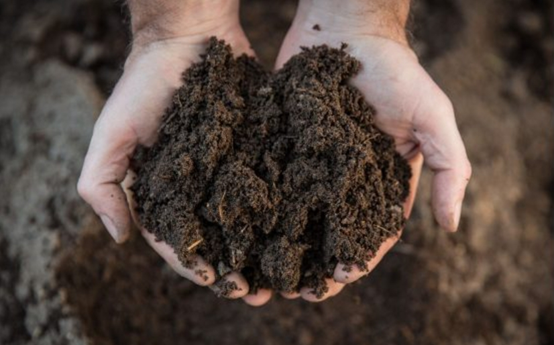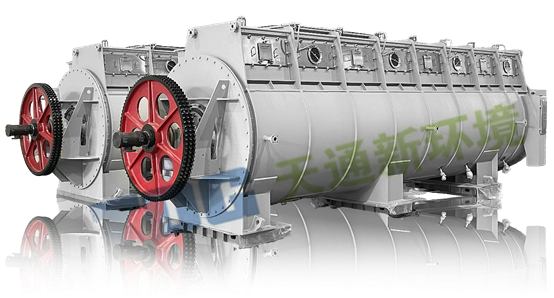

BLOG
Multiple Uses of Sludge after Treatment by Disc Dryer
Multiple Uses of Sludge after Treatment by Disc Dryer
14 August 2025
In the field of environmental protection, sludge treatment has always been a difficult problem of great concern. The emergence of the disc dryer has brought a new turn to sludge treatment. The sludge treated by the disc dryer has a significantly reduced moisture content and significantly improved properties, thus having a variety of potential uses and playing an important role in realizing resource recycling and reducing environmental pollution.

I. Energy Recovery and Utilization
(I) Incineration for Power Generation
The dried sludge has a certain calorific value and can be used as fuel mixed with traditional fuels such as coal and sent to boilers for incineration to generate electricity. Taking a sludge disposal project as an example, the wet sludge is indirectly heated by low-grade steam from the power plant through a disc dryer, reducing the moisture content from 60% - 85% to 30% - 40%. The dried sludge is sent to a large pulverized coal boiler for co-incineration, and the heat released by its combustion is used for power generation. This method not only effectively treats the sludge but also generates electric energy, realizing energy recovery. Compared with direct landfilling or simple stacking, sludge incineration for power generation not only reduces the occupation of land resources but also reduces the potential threat of harmful substances in the sludge to the environment, and at the same time supplements part of the power demand, having good environmental and economic benefits.
(II) Preparation of Biofuel Gas
Dried sludge can be used to produce biofuel gas, such as methane, through biological technologies like anaerobic fermentation. The disc dryer reduces the moisture content of the sludge, creating more favorable conditions for subsequent anaerobic fermentation. In an anaerobic environment, organic matter in the sludge is decomposed by microorganisms, producing biofuel gas mainly composed of methane. Methane can be used as a clean energy source for heating, power generation, etc., reducing reliance on fossil energy. Moreover, the residues after anaerobic fermentation of sludge can be further processed for use as fertilizers, realizing multi-level utilization of resources.
II. Application in Building Material Production
(I) Raw Material for Brick-making
Dried sludge can be used as part of the raw material for brick-making. Due to its certain viscosity and plasticity, dried sludge can be uniformly mixed with other brick-making materials such as clay and fly ash. During the brick-making process, organic matter in the sludge is decomposed at high temperatures during firing, while the remaining inorganic substances participate in the formation of bricks, improving their strength and durability. Using dried sludge for brick-making not only reduces the exploitation of natural clay resources but also realizes the resource utilization of sludge, lowering brick-making costs. For example, building material enterprises in some regions add dried sludge to brick-making raw materials in a certain proportion to produce building bricks that meet national standards, which are widely used in various construction projects.
(II) Production of Cement Clinker
Dried sludge can also play a role in the cement production process. By adding dried sludge to cement kilns as a substitute for some traditional raw materials (such as clay and iron ore), the combustible components in the sludge burn at high temperatures to provide heat, and the silicon, aluminum, iron and other elements it contains participate in the formation reaction of cement clinker. This not only reduces the demand for traditional raw materials in cement production but also utilizes the calorific value of sludge, reducing energy consumption. At the same time, the high-temperature environment in the cement kiln can completely kill pathogens in the sludge, achieving harmless treatment of sludge.
III. Soil Improvement and Agricultural Applications
(I) Soil Conditioner
Dried sludge is rich in nutrient elements such as nitrogen, phosphorus, potassium, and organic matter, and can be used as a soil conditioner to improve soil structure and fertility. In some barren or sandy soils, adding an appropriate amount of dried sludge can increase the soil's water and fertilizer retention capacity, improve soil aeration and water permeability, promote the activity of soil microorganisms, and create a good environment for plant growth. For example, in agricultural planting, mixing dried sludge with soil in a certain proportion for growing vegetables, flowers, and other crops can increase crop yield and quality. However, it should be noted that before use, the content of harmful substances such as heavy metals in the sludge must be tested to ensure it meets the relevant standards for soil conditioners, avoiding pollution to soil and crops.
(II) Raw Material for Organic Fertilizer
After further treatment (such as composting, biological fermentation, etc.), dried sludge can be made into organic fertilizer. During composting, microorganisms are used to further decompose and transform organic matter in the sludge into stable humus, while killing harmful bacteria and parasite eggs. The produced organic fertilizer can not only provide long-term nutrient supply for crops but also improve the soil micro-ecological environment, reduce the use of chemical fertilizers, and reduce agricultural non-point source pollution. Agricultural cooperatives in some regions have applied organic fertilizers made from dried sludge to the cultivation of cash crops such as orchards and tea gardens, achieving good results, which not only realizes the resource utilization of sludge but also promotes the development of green agriculture.

Sludge treated by the disc dryer shows rich uses in the fields of energy recovery, building material production, soil improvement, and agriculture. Through the rational utilization of dried sludge, we can not only effectively solve the problem of sludge disposal but also create significant economic and environmental benefits, providing strong support for achieving sustainable development goals. With the continuous progress of technology and in-depth research, it is believed that the application prospect of dried sludge will be broader.



